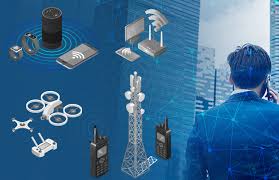Wireless Compliance Testing: Ensuring Device Safety and Performance
In today’s rapidly evolving technological landscape, wireless compliance testing has emerged as a critical component in the development of wireless devices. As the demand for connectivity increases, so does the necessity for ensuring that these devices meet established safety and performance standards. In this article, we delve into the nuances of wireless compliance testing, its importance, processes, and the impact it has on product development and market entry.
What is Wireless Compliance Testing?
Wireless compliance testing involves evaluating devices that utilize wireless technologies to ensure they meet regulatory standards set by authorities such as the Federal Communications Commission (FCC) in the United States or the European Telecommunications Standards Institute (ETSI) in Europe. This testing ensures that devices operate within specified frequency ranges, do not interfere with other electronic devices, and comply with safety regulations.
Importance of Wireless Compliance Testing
1. Safety Assurance
One of the primary goals of wireless compliance testing is to ensure the safety of the end-users. Non-compliant devices can pose significant risks, including overheating, exposure to harmful radiation, or even electrical failures. Testing verifies that devices operate safely under expected usage conditions.
2. Regulatory Adherence
Manufacturers must comply with local and international regulations before their devices can be marketed. Wireless compliance testing ensures that products adhere to relevant standards, thus avoiding legal penalties and facilitating smoother entry into various markets.
3. Market Competitiveness
In a highly competitive marketplace, having compliant products can serve as a significant differentiator. Consumers are increasingly discerning about the products they purchase, often looking for verified safety and performance. Compliance testing can enhance brand reputation and increase marketability.
Key Standards in Wireless Compliance Testing
1. FCC Standards
In the United States, the FCC sets the rules for wireless communication. Devices must undergo testing to meet the Part 15 regulations, which cover unlicensed radio frequency devices. This ensures that they do not cause interference with licensed communications.
2. ETSI Standards
In Europe, ETSI provides guidelines for wireless devices under the Radio Equipment Directive (RED). Compliance with these standards is crucial for marketing wireless products in European markets.
3. IEEE Standards
The Institute of Electrical and Electronics Engineers (IEEE) establishes standards for various wireless technologies, including Wi-Fi (IEEE 802.11), Bluetooth (IEEE 802.15), and others. Adhering to these standards ensures interoperability between devices from different manufacturers.
The Wireless Compliance Testing Process
1. Pre-Compliance Testing
Before formal testing, manufacturers can conduct pre-compliance testing to identify potential issues. This phase involves assessing the design and components of the device to ensure it meets the relevant standards before undergoing full compliance testing.
2. Formal Testing
Formal compliance testing involves rigorous evaluations in accredited laboratories. These tests assess various parameters, including:
- Radiated Emissions: Measurement of electromagnetic energy emitted from the device.
- Conducted Emissions: Assessment of noise levels on power lines and connectors.
- Radiated Immunity: Evaluation of the device’s resistance to external electromagnetic interference.
- Safety Testing: Verification of compliance with safety standards regarding electrical hazards and exposure limits.
3. Certification
Upon successful testing, manufacturers receive a certificate of compliance, which serves as proof that the device meets regulatory standards. This certification is often required for market entry.
Challenges in Wireless Compliance Testing
1. Evolving Regulations
As technology evolves, so do the standards and regulations governing wireless devices. Manufacturers must stay abreast of changing compliance requirements to ensure their products remain compliant.
2. Complexity of Wireless Technologies
The increasing complexity of wireless technologies, including the rise of 5G, introduces additional challenges in compliance testing. Devices must be tested for new frequency bands, modulation techniques, and communication protocols.
3. Cost and Time Constraints
Compliance testing can be both time-consuming and costly, particularly for startups and small manufacturers. However, investing in comprehensive testing is crucial to avoid potential recalls and legal issues.
Best Practices for Successful Wireless Compliance Testing
1. Engage with Experts
Collaborating with testing laboratories and compliance consultants can streamline the testing process. Their expertise can help identify potential issues early, reducing the risk of costly redesigns later in development.
2. Implement Design for Compliance (DfC)
Adopting a Design for Compliance approach encourages manufacturers to integrate compliance considerations into the early stages of product design. This proactive strategy can minimize the likelihood of compliance issues during testing.
3. Regularly Review Standards
Manufacturers should regularly review relevant standards and regulations. This ensures that they remain compliant throughout the product lifecycle and can quickly adapt to any changes.
Conclusion
Wireless compliance testing is an essential process that ensures the safety, performance, and marketability of wireless devices. By adhering to established standards and engaging in comprehensive testing, manufacturers can enhance their product offerings and avoid costly setbacks. As the wireless technology landscape continues to evolve, staying informed about compliance requirements will be critical to success.




